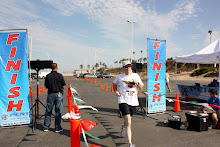Ft. MacArthur in San Pedro, California started training dogs and turning them into sentries and "soldiers" even before the well-known "Dogs for Defense" program was fully formed in the early years of World War II.
The following story is from the Dallas Morning News, October 13, 1942:
Sentry Dog AWOL Over Attachment For Motorcycle
FORT MACARTHUR, Calif., Oct. 12 (AP).-- Every time a motorcycle went by it made King, a big black and tan shepherd sentry dog, homesick.
So the other day when one passed he jumped an eight-foot barbed wire-topped fence and went A.W.O.L. for the second time. A bewildered man later turned him over to San Pedro police with the explanation he had found King curled up contentedly beside his motorcycle.
Police checked King's licence tag and solved the puzzle. The dog has belonged to Motorcycle Officer Orville Clutterman of Van Nuys, who gave him to Fort MacArthur for sentry duty.
King is back at the fort, ordered confined to quarters for two days, but Sergt. Robert Pearce, trainer and handler of sentry dogs, is keeping a motorcycle around until King forms new affections.
Friday, February 26, 2010
Saturday, February 13, 2010
California Fish Company and the Alpha
I have completed quite a bit of research on the California Fish Company and its fishing vessel named the Alpha. Here is a preview:
The California Fish Company opened in 1893 and was the first cannery in Los Angeles Harbor, the first successful Pacific Coast sardine cannery, and the world's pioneer albacore tuna cannery.
The Alpha, California’s first purse seine boat, was built in 1893 in Alameda, California. The sloop had a 60-foot mast and carried a large main sail, a “jib” (small triangular sail forward of the mast) and a “flying jib” (outermost jib). She was also most likely the first gasoline-powered fishing boat in Los Angeles Harbor.
The Alpha had a crew of about seven that consisted of a captain, engineer, cook and four fishermen, all of whom fished and helped keep the boat and gear in good working order. Members of the crew were paid wages, as well as a certain percentage of the value of their catch. The crew spotted schools of sardines at the surface in nearby waters. The easiest way to spot a school of sardines was by spotting their fluorescent glow on a dark night.
The California Fish Company opened in 1893 and was the first cannery in Los Angeles Harbor, the first successful Pacific Coast sardine cannery, and the world's pioneer albacore tuna cannery.
The Alpha, California’s first purse seine boat, was built in 1893 in Alameda, California. The sloop had a 60-foot mast and carried a large main sail, a “jib” (small triangular sail forward of the mast) and a “flying jib” (outermost jib). She was also most likely the first gasoline-powered fishing boat in Los Angeles Harbor.
The Alpha had a crew of about seven that consisted of a captain, engineer, cook and four fishermen, all of whom fished and helped keep the boat and gear in good working order. Members of the crew were paid wages, as well as a certain percentage of the value of their catch. The crew spotted schools of sardines at the surface in nearby waters. The easiest way to spot a school of sardines was by spotting their fluorescent glow on a dark night.
Subscribe to:
Posts (Atom)

